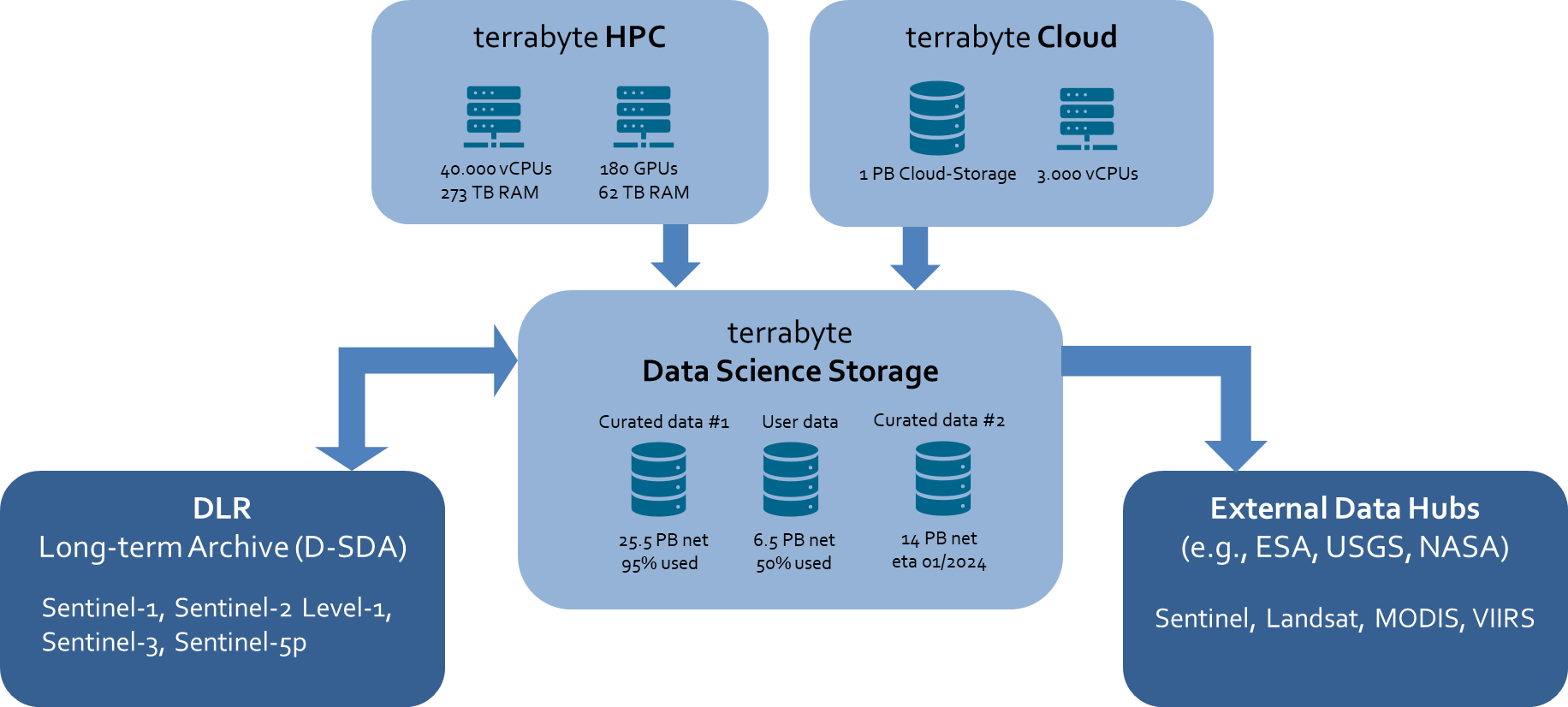terrabyte Infrastructure
The main components of the terrabyte infrastructure are shown in the Figure below.
terrabyte's Compute Resources are available as both, High Performance Computing (HPC) and cloud-based service infrastructures. While the HPC is mainly for data processing and analysis, terrabyte Cloud is focused on the provision of web services (e.g., for the metadata catalogue, visualization services). terrabyte combines classic processors (CPU) with accelerators and graphics processing units (GPU). The core of the platform consists of ThinkSystem SD650-N V2 servers and DSS-G (Distributed Storage Solution for IBM Spectrum Scale) memory by Lenovo. For classic modelling and simulation as well as AI workloads, the platform is equipped with CPU nodes, each with two 40-core Intel Xeon Platinum processors, as well as GPU nodes, each featuring four A100 accelerators from NVIDIA. This equipment allows the HPDA platform to achieve a performance of up to 4.7 petaflops, which means it can handle up to 4.7 quadrillion floating point operations per second.
Data is mainly stored in the Data Science Storage component, which provides around 45 Petabyte of usable storage. Thanks to Infiniband HDR, terrabyte can process data at a speed of 320 GB/s. In addition, cloud storage (1 Petabyte) is available for the cloud services. terrabyte is connected to data providers via Internet and GEANT (e.g., ESA, NASA, USGS) and to DLR's German Satellite Data Archive via a direct network line between LRZ and DLR.
terrabyte's performance will be further extended and optimized over time. A hot-water cooling system ensures an energy-efficient operation.
(Parts of the text extracted from LRZ)
